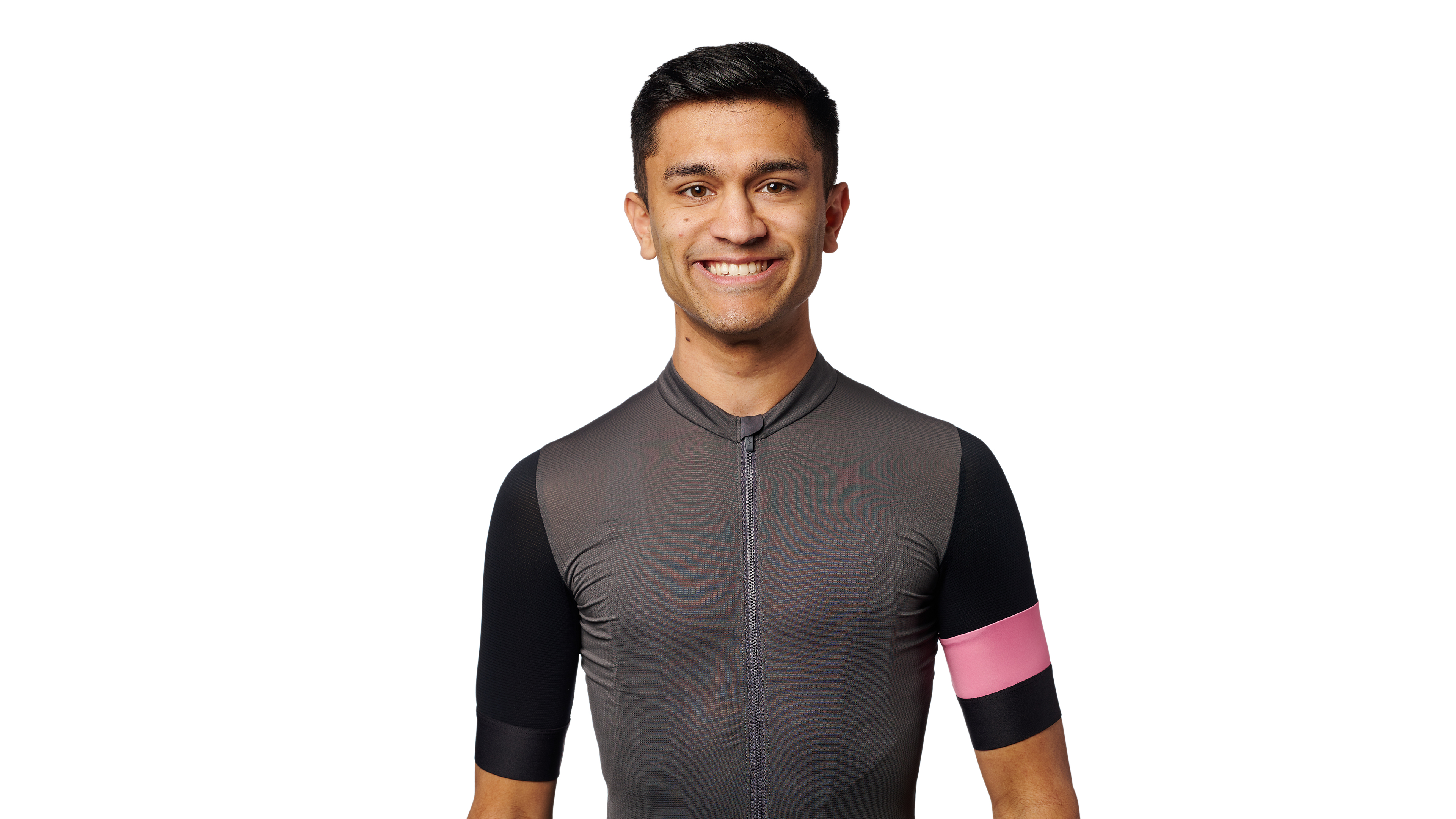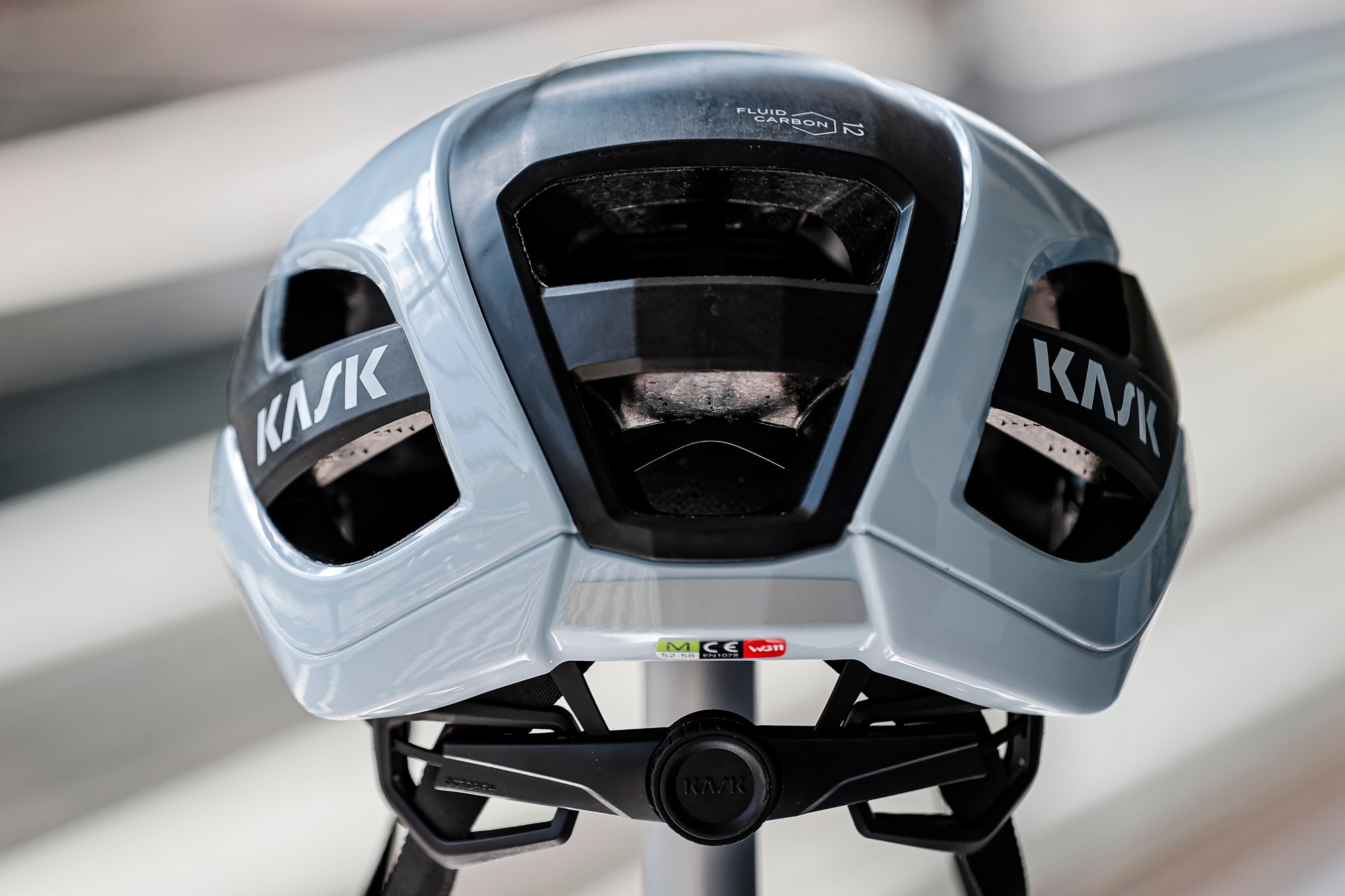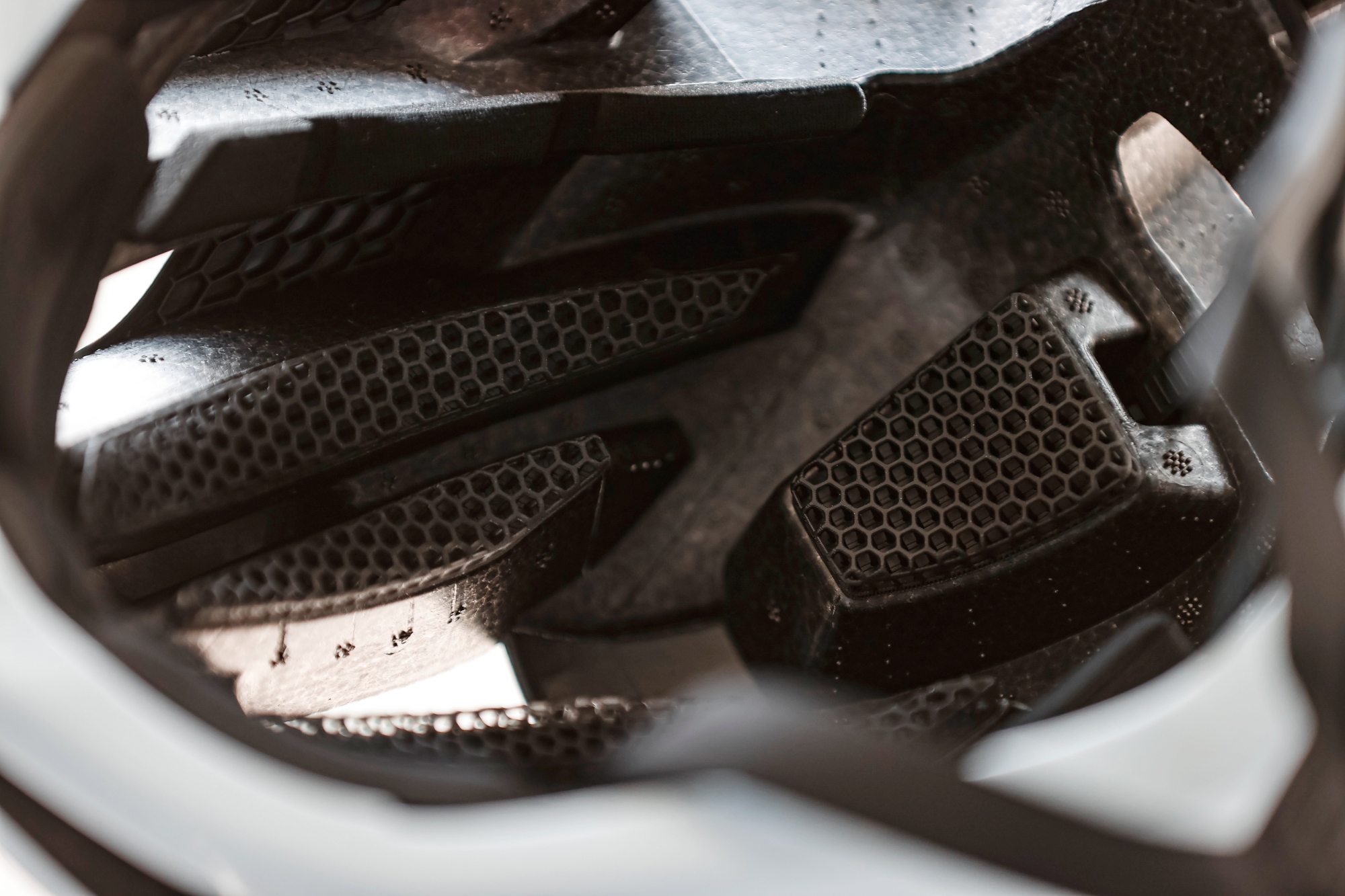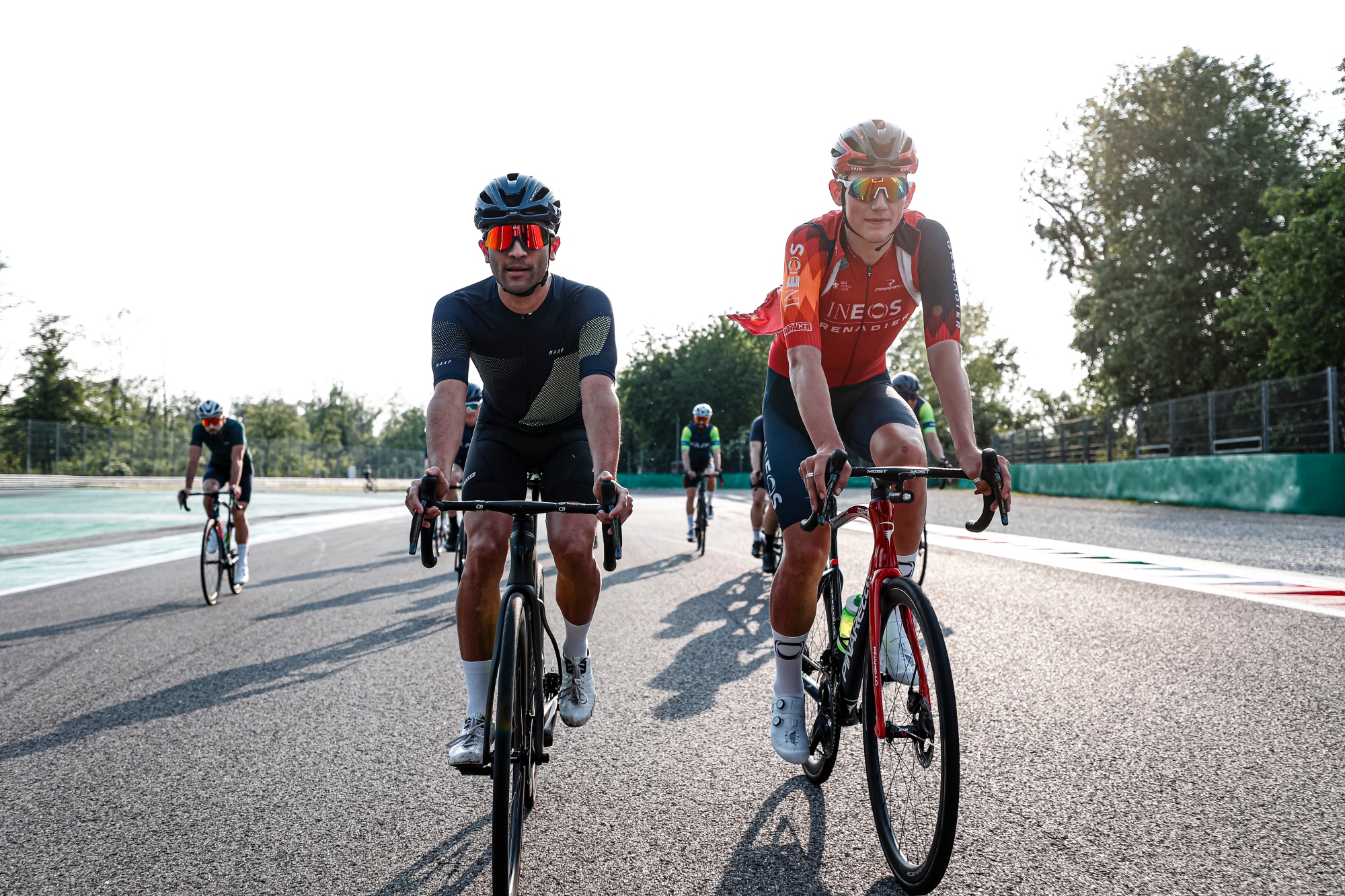KASK Elemento helmet first look - carbon fibre, 3D printing and a price to match
Kask's new range topping helmet performs well, but has a price tag to match


It’s been on the heads of Ineos Grenadiers riders for the past few months at the world's biggest races, but, finally, Kask has officially launched their new top of the range helmet, the Elemento, to the rest of us.
This is not a direct replacement for its previous range topping Protone - currently one of the best road bike helmets around. The missing leather strap, new construction method and eyebrow raising price will tell you that much.
Kask Elemento : New design
First off, let's look at the name. Its called Elemento, says Kask, because of the use of carbon - the 12th 'element' in the periodic table. More specifically, the brand's own Fluid Carbon 12, which it describes as an ‘injection moulded composite technopolymer’ containing 30% carbon fibre and 70% reinforced plastic. This differs to the usual epoxies and resins that give carbon fibre its shape.
The Elemento was created to sit above the Protone, placing itself in an altogether new tier of helmets. We know this, purely based on the price of the helmet, at £335 / $400 / €375 it makes the Elemento the most expensive road helmet we’ve ever seen.
When Kask was designing the new helmet, it says that it approached the project with four main areas of focus; safety, comfort, performance and design. It’s in this order that it claims to have prioritised their decision-making process. The helmet plays host to many new innovations, so let’s first look at the aforementioned inclusion of an injection moulded thermoplastic shell and how that works into the design pillars.

Kask elemento also features WG11 safety standards
The Fluid Carbon 12 shell consists of two parts. The first being the large piece which can clearly be seen on top of the helmet. The second wraps around the rest of the helmet and is somewhat more disguised, but still very much present.
It's claimed that the shell provides strength to the helmet in the case of an impact, but the bigger benefit is what the carbon shell allowed Kask to do with the EPS (Expanded Polystyrene) within the shell.
Kask reduced the thickness of the EPS from a typical 25 - 30 mm down to one mm in certain areas of the helmet to allow for more airflow. It's this reduction in material that has helped the brand to explore new ways to battle the compromise of aero performance and ventilation.
Kask claims that it has been able to increase both breathability and aerodynamic performance at the same time. Something which is not easy to do. Usually, ventilation requires big holes. However, while the holes have shrunk compared to the Protone, allowing for better aero performance, the reduction in EPS has created the much-needed ventilation to help keep the riders’ head cool - something which is critical in aiding performance.
The drive for increased safety and ventilation also resulted in the introduction of Kasks’ new Multipod helmet pads. Simply put, these pads replace some of the foam pads you’re used to seeing on the inside of a helmet. They’re found in the central locations of the helmet, with the forehead pad and widest sitting pads remaining in the usual foam.
The Multipod pads share a lot of the same technology as the 3D printed saddles which sit atop Specialized’s and Fizik’s ranges. However, the Multipod pads are made from a slightly different material and the layup of the structure is also quite different.
The pads have been designed so that they compress and move in the same way no matter which direction the helmet is impacted from. Also, Kask has kept the structure as open as possible to reduce the amount of contact the helmet has with the rider and in turn aiding comfort and ventilation.
Kask claims that the use of the Multipod pads also increases comfort. By reducing the perceived contact with the head and allowing for more airflow, in theory it should mean it's easier than ever to forget that the helmet is on your head.

A closer look at Kask's new multipod pads
Kask says that the new Elemento is not as breathable as the Valegro nor is it as aero as the Utopia Y. It also says that this is not a new version of the Protone, as that helmet will continue to be made, but the Elemento is claimed to outperform the Protone on every metric.
The Italian brand used a new piece of software called Aerocloud to assist in the development of the Elemento. This allowed it to run simulations on thousands of designs to speed up the rate of testing. This meant when it did take prototype helmets to the wind tunnel, it was testing helmets which it already had a good level of confidence in. Kask was also able to run thermal simulations to make sure the helmet was hitting its expectations of airflow and cooling.
When compared to the Protone, the Elemento is claimed to provide a -0.26°C reduction is head temperature and an ‘estimated 1.5% drag reduction on total CdA’ which results in a claimed saving of between 5-10 watts compared to the Protone.
Another seemingly large increase in performance over the Protone is an improved safety from impacts, as it claims that it is ‘+10% in absorbing energy from both linear and rotational impacts’.
As you’d expect, for a helmet which has been created to outperform the brands’ previous best helmet, it has a price to match. It will cost £335 / $400 / €375. That is a new record for a road helmet, and the severity of that price bites even more when considering the Protone retails at £245 / $299.
Kask Elemento : First ride impressions
As a fierce Formula 1 fan, you can imagine my excitement when I discovered that the launch event for the helmet was being held at the Monza F1 circuit, home of the Italian Grand Prix. Monza does go by another name, the temple of speed.
The long straights and sweeping corners result in one of the fastest tracks on the F1 calendar, and it’s this reputation that Kask wanted to speak to with the launch of the Elemento. It says that the very location embodied much of what the helmet itself represents.
With free rein of the track, we were left to ride round as much as we liked. Chaperoned by none other than Josh Tarling of Ineos Grenadiers, you can imagine a few hot laps were attempted. Most consisted of me trying (and failing) to hang onto his wheel.
In all this excitement, it struck me that I had barely thought about the very thing I was there to test, the helmet, and perhaps that’s the highest praise you can give a lid. The majority of cyclists understand the benefits of a helmet and why it’s good to wear one, but, there’s nothing better than forgetting you have one on your head.
The ventilation seemed effective as I could feel air blasting over my skull. It’s also quite comfortable, it has a natural fit with an easy to operate size adjustment wheel. The cage is easy to slide up and down to cater for the shape of different riders heads, it doesn’t lock in place which took a little getting used to, but once on my head, despite my best efforts, it did not move.
When putting the helmet on, the cage does need to be slightly manipulated backwards so that you can slide the helmet on your head, but once in place, it feels secure and stable.

I cannot comment on how fast the helmet felt, my levels of fitness are at a place where I cannot blame a helmet for holding me back, but what I can speak about are the properties that matter to the majority of riders and those who will be looking at this helmet as a potential purchase.
The ventilation, comfort, design and perceived feeling of safety are all what you would expect from a top of the range helmet. But it’s for this very reason that the Elemento opens itself up for criticism.
Considering the price that the Elemento will be sold at, it comes in at over 30% more expensive than the Protone. Having lost its crown as the range topping all round road helmet in the Kask line up, the Protone now represents a better value option.
When we reviewed the Protone we gave it four stars with the only criticism being its price, but we really enjoyed how the it performed. I have a suspicion that history will repeat itself for the Elemento.
Now that the Protone can easily be found discounted online, the Elemento has its work cut out to justify to consumers why they should buy it. I look forward to spending more time with the helmet, and comparing it against the Protone to discover whether it really is worth the extra cost.

Thank you for reading 20 articles this month* Join now for unlimited access
Enjoy your first month for just £1 / $1 / €1
*Read 5 free articles per month without a subscription

Join now for unlimited access
Try first month for just £1 / $1 / €1
Get The Leadout Newsletter
The latest race content, interviews, features, reviews and expert buying guides, direct to your inbox!

After discovering his love of cycling in college, Sam has always kept two wheels very close. Having spent over five years working in a couple of local bike shops, it's fair to say he enjoys getting hands on. He also loves to push himself to ride ever longer distances and to explore as many new places as possible.
Sam has been Cycling Weekly's video manager since January 2022. You'll find him on our YouTube channel where he brings you the latest cycling tech news, rides, reviews and all of the most important new launches while taking in some incredible cycling adventures too.
-
 If safety was really the priority of racing, we’d be doing it online
If safety was really the priority of racing, we’d be doing it onlineWe’ll need to get more radical to reduce the risks of racing, says CW's columnist
By Michael Hutchinson
-
 Why do I feel like a cheat every time I ride my e-bike?
Why do I feel like a cheat every time I ride my e-bike?I love my e-bike but struggle with the shame that accompanies me on my rides. Why?
By Simon Fellows